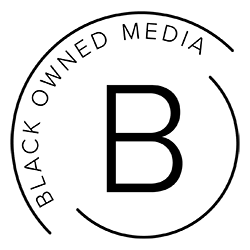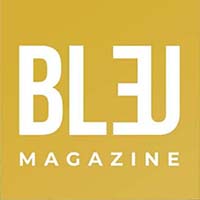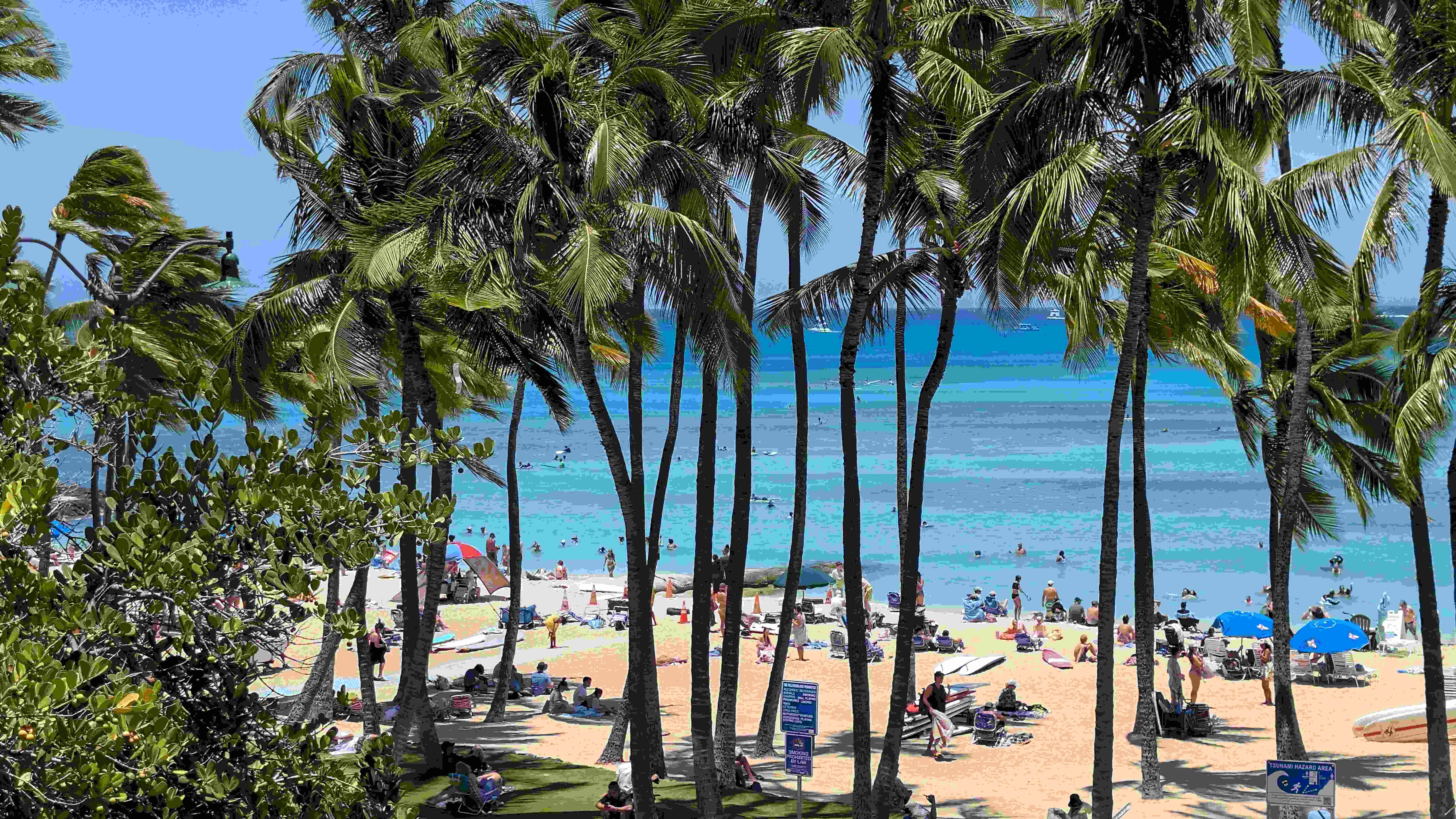
We Faced Our Surf Fears in Waikiki – One of Us Rode Every Wave, the Other Got Wrecked
Two travel writers’ best friends’ guide to surfing, staying, and eating your way through Waikiki.
By Becca Blond & Brandon SchultzAug. 26 2025, Published 2:05 p.m. ET
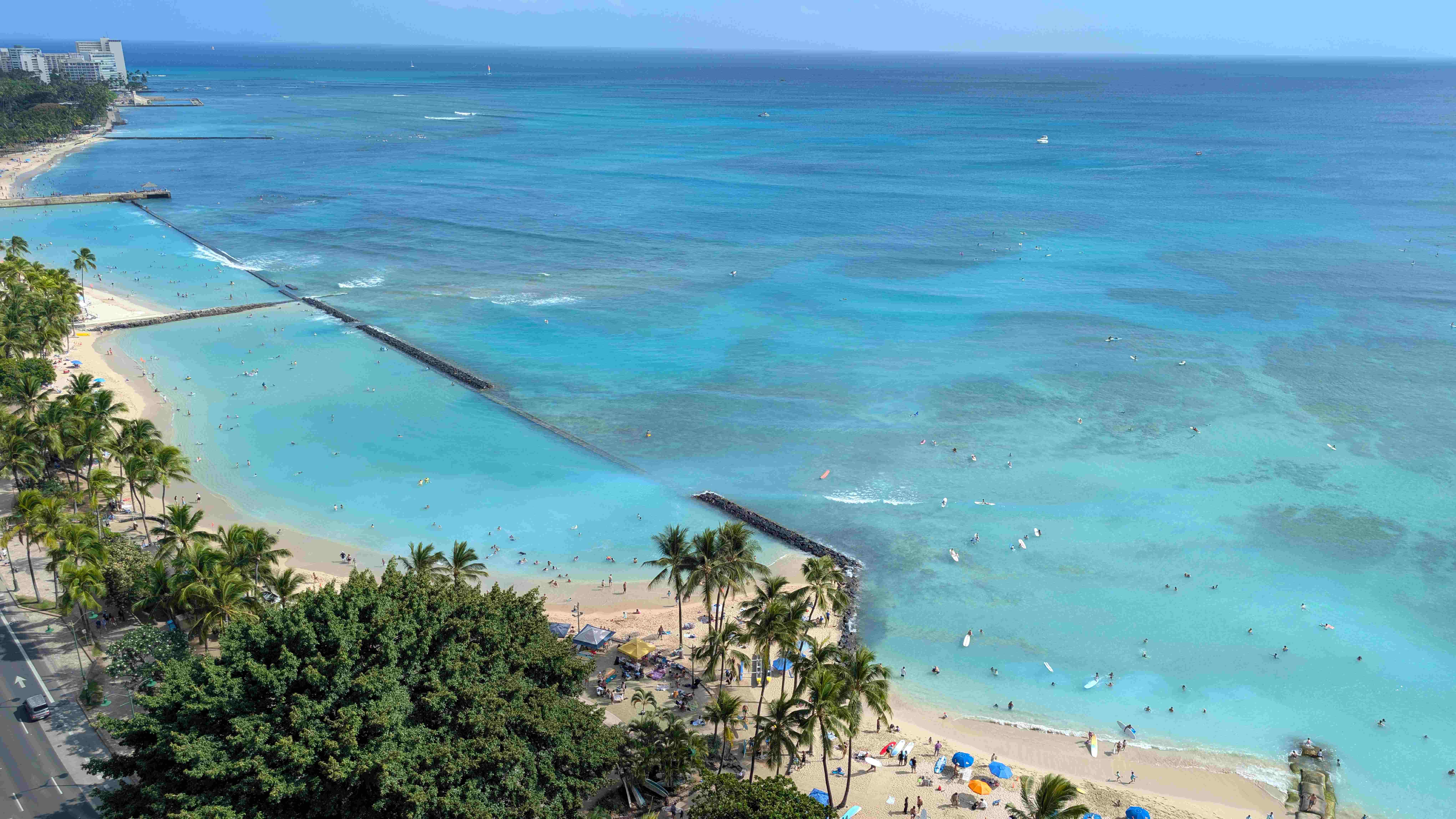
We both had something to prove. Brandon had a lingering fear of sharks. Becca was still recovering from a slightly traumatic experience trying to teach herself to surf with an ex on a reef break in Australia. Between the coral cuts and the emotional scars, she’d mostly stuck to bodyboarding ever since.
But on this trip to Waikiki, we decided to face our fears head-on. We were staying just across from the break, and surfing Waikiki felt like the right kind of challenge: equal parts bucket list and personal redemption.
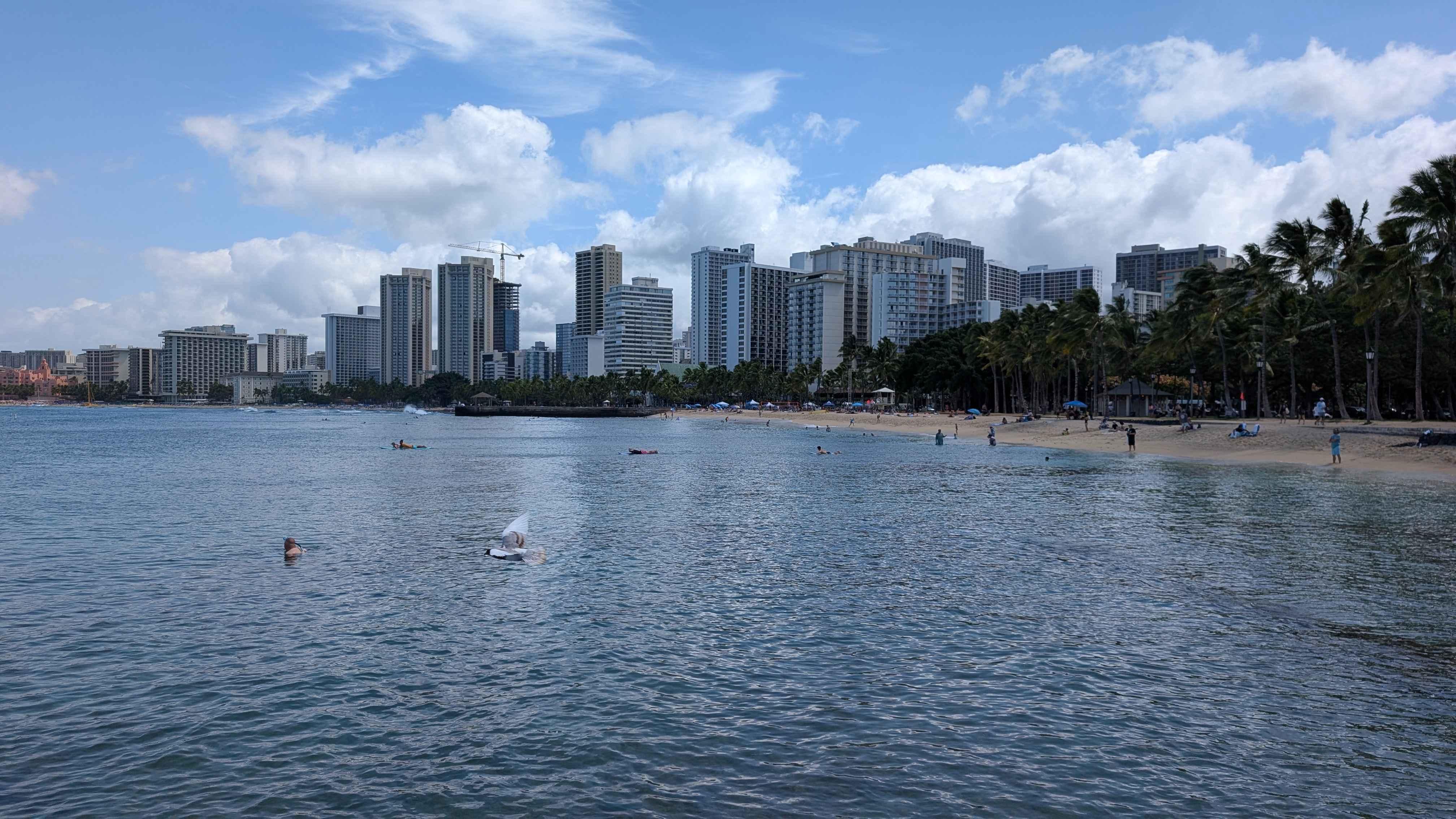
Waikiki is known as one of the most consistent beginner surf breaks in the world—warm, mellow, and surprisingly forgiving. That didn’t make it easy. Paddling out was a workout, and that’s where the similarities ended. Popping up took multiple tries and more wipeouts than Becca liked to admit. But eventually, she caught a wave. It was small and slow, but standing up felt like a win.
Brandon, on the other hand, was a natural. He stood up on his first try and rode nearly every wave after that. No hesitation. No flailing. Just a steady glide like he’d been doing it for years. After the third wave, the joy of surfing overtook the fear of fins hiding in the back of his mind.
We booked our lesson with Moniz Family Surf, right next to the Hyatt. The family-run company offers group sessions and board rentals. Josh Moniz—a pro surfer from a legendary Hawaiian surf family—was our instructor. He grew up riding these waves with his siblings, including his sister Kelia, a two-time world champion. Josh was calm, encouraging, and laser-focused in the chaos of a crowded lineup. With his guidance, we both felt confident, and by the end, completely exhilarated.
Afterwards, we crashed on our balcony, muscles sore, salt in our hair, watching other surfers paddle out while the sun dropped low over the Pacific, soaking up the energy that is Waikiki.
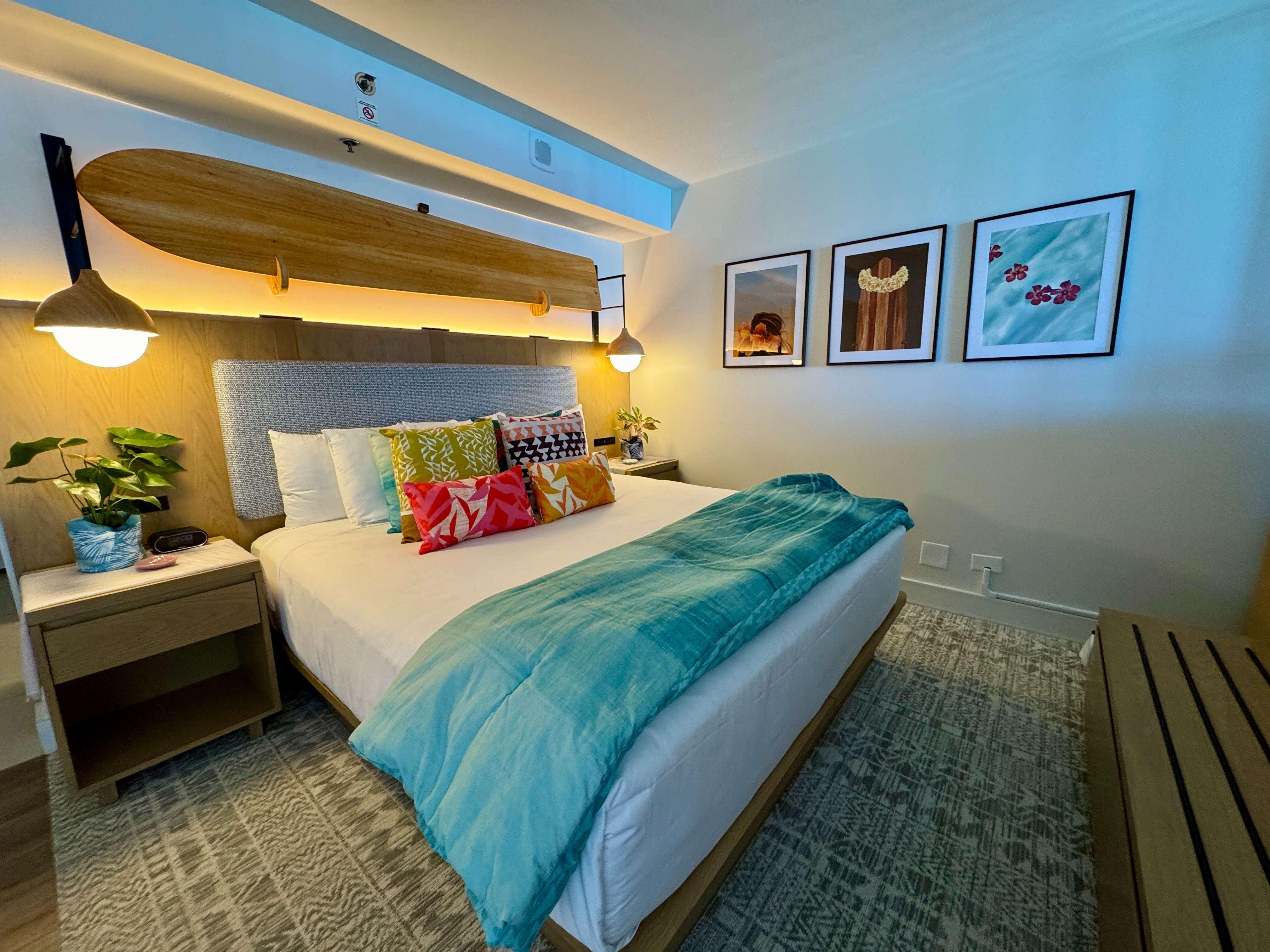
Where to Stay in Waikiki: Hyatt Regency’s Surf House Suite Hits the Mark
We stayed at the Hyatt Regency Waikiki Beach Resort and Spa, located directly across from the beach and the Duke Kahanamoku statue. We were in the Surf House Suite, which felt tailor-made for the kind of trip we were on.
With wave-inspired artwork, a full-sized Moniz Family surfboard, and a ukulele propped beneath a barrel wave mural, the room felt infused with surf culture. Even the bed had a mounted longboard above it and tropical-print pillows that struck the right balance between playful and polished.
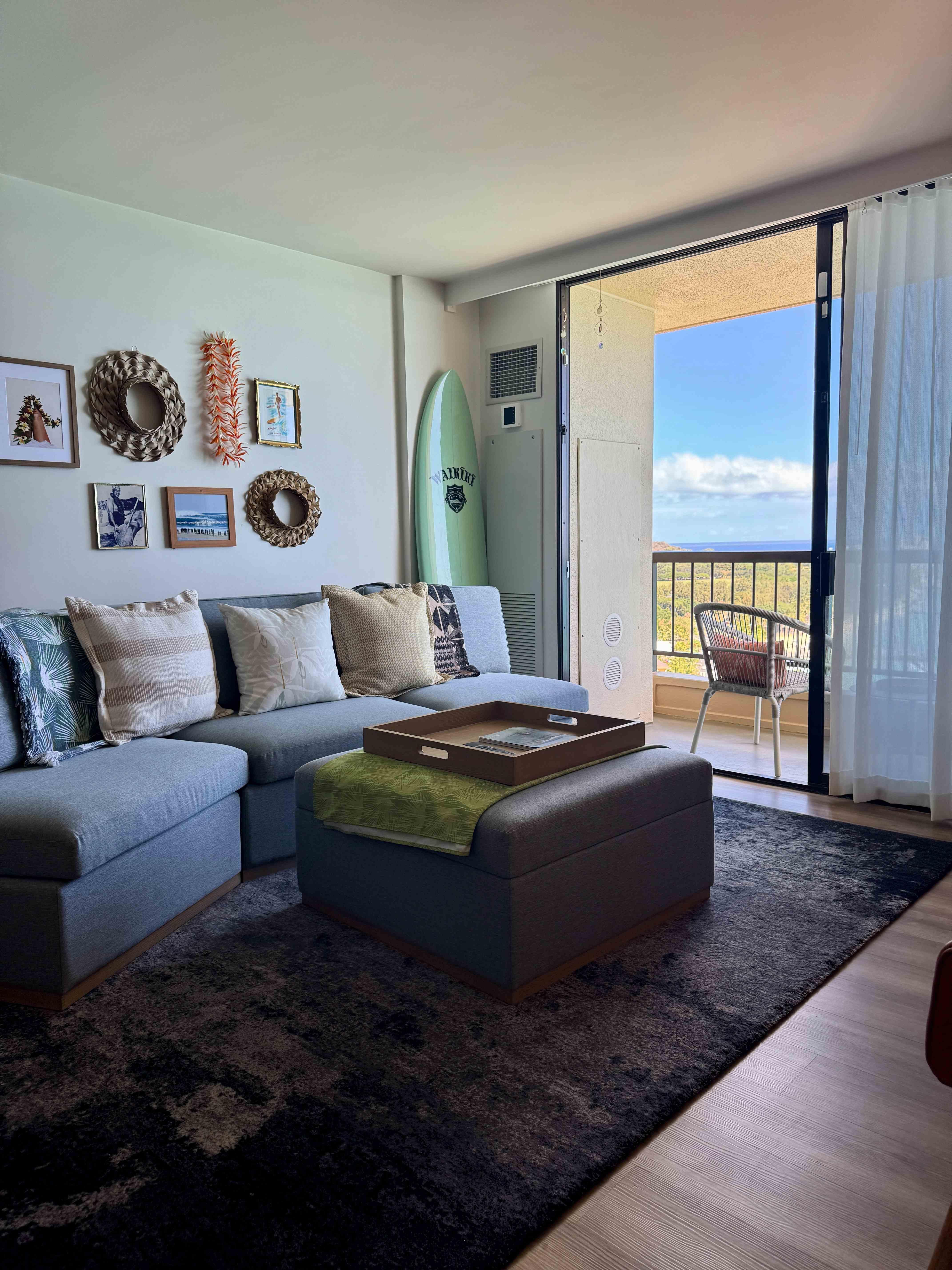
The best part of the suite was the balcony. We spent a lot of time out there—drinking coffee, marveling at the clarity of the turquoise sea below, watching longboarders cut clean lines through the waves. It was the kind of spot that made it hard to leave the room.
The resort boasts over 1,200 rooms and suites, each equipped with a private balcony. It’s a solid pick for couples, families, or friends traveling together. The pricing is fair considering the quality and prime location—nearly everything in Waikiki is within walking distance. There’s also a small pool with cabanas and loungers.
After our lesson, we booked massages at the Nā Ho’ōla Spa. Becca opted for the tension relief treatment. It wasn’t exactly gentle, but it got deep into the knots and left her feeling restored. Brandon opted for a more relaxing treatment, and we left feeling transformed.
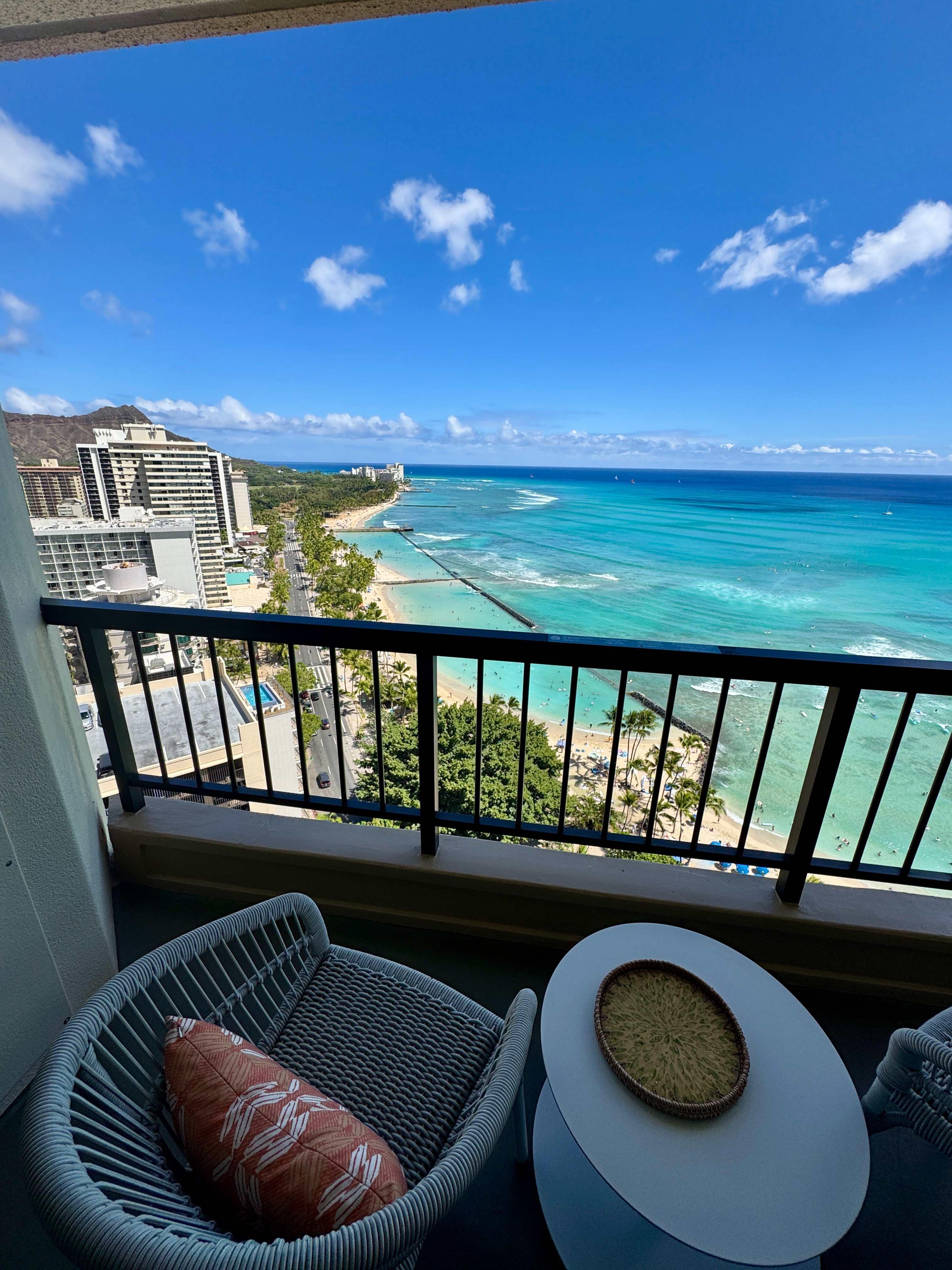
What to Eat in Waikiki: From Poke Bowls to Late-Night Korean Ramen
Waikiki’s food scene covers everything from upscale seafood to grab-and-go musubi, and we tried to cover as much ground as possible.
At the Hyatt, SWIM was our casual lunch staple. The tuna poke bowl was loaded with fresh ahi and bold flavors, perfect after a morning in the water. The Korean fried chicken sandwich was another winner. The Buffet at Hyatt, a third-floor open-air space with a panoramic view over Waikiki Beach, features a lineup that includes fresh sashimi, sushi rolls, crab legs, kalbi short ribs, prime rib, and spicy tteokbokki. On select nights, part of the space transforms into Nā Lei Aloha, the resort's lu'au experience with fire dancing, hula, and traditional Hawaiian dishes. In the morning, we were regulars at their expansive breakfast buffet, SHOR.
A few blocks from the hotel, K Food Ramen 808 serves up delicious Korean food truck fare late into the night. Brandon enjoyed the bulgogi bowl, while Becca dug into a tteokbokki and ramen mash-up that brought real heat and chewy texture.
Other good spots include local favorite Marugame Udon, where the noodles get pulled fresh behind the counter before being topped with tempura and savory broth.
Another top choice is Helena’s Hawaiian Food, a no-frills institution that’s been serving pipikaula short ribs, laulau, and lomi-lomi salmon since 1946. Musubi Cafe Iyasume offers nearly a dozen styles of Spam musubi that are handmade to order.
And if you are just looking for a classic surf-and-turf vibe with tropical cocktails and live music, Duke’s Waikiki is an iconic beachfront choice.
Getting to Waikiki: Flights, Timing, and When You’ll Need a Car
Waikiki is a neighborhood in Honolulu on the island of Oʻahu. You’ll fly into Honolulu International Airport (HNL), which has direct connections from most major U.S. cities, including New York, Los Angeles, San Francisco, Chicago, and Denver. From the airport, it’s about a 25-minute drive into Waikiki.
Once you arrive, you likely won’t need a car unless you're planning day trips outside the city. Waikiki is made for walking—beach access is easy, and everything from surf shops to restaurants is within a few blocks. That said, it’s worth renting a car for at least a day to explore the North Shore, check out local shrimp trucks, or hike one of the island’s lesser-known trails.
